The rise of digital technology has transformed Filipino music production**. With digital distribution, artists can now share their music globally, reaching a wider audience. For instance, platforms like Spotify**, Apple Music, and YouTube Music allow artists to upload their music and connect with listeners worldwide.
However, digital distribution also presents challenges. One major concern is the low royalty rates paid to artists. For every stream, artists earn only a fraction of a cent, making it difficult for them to earn a living from their music. To illustrate, a song with 1 million streams on Spotify might only generate around $4,000 in royalties.
Social media has become a vital promotional tool**. Artists use platforms like Instagram, Facebook, and Twitter to share their music, engage with fans, and build their brand. However, this also creates pressure to maintain** a strong online presence, often prioritizing online metrics over artistic quality.
Artificial intelligence (AI) is changing the music production landscape. AI-powered tools can assist in songwriting, composition, and even music creation. While AI can enhance the production process, it raises concerns about artistic integrity****. Artists must consider whether AI-generated music compromises their creative vision.
The digital divide remains a significant obstacle. Many Filipino artists, particularly those from rural areas or with limited financial resources, lack access to digital tools, training, and infrastructure. This limits their ability to produce and distribute music digitally.
A clear framework is essential to address these complex issues. The Philippine music industry needs to establish guidelines that ensure fair compensation for artists, protect their rights, and promote digital literacy. By doing so, the industry can navigate the challenges of digital technology and thrive.
Digital Music's Rise in the Philippines
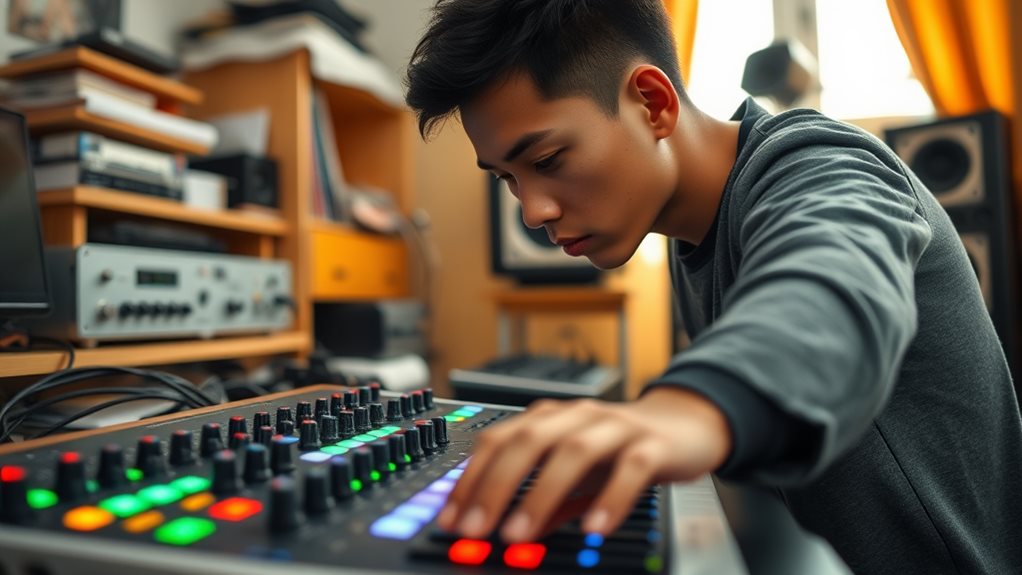
Digital music's rise has revolutionized the Philippine music industry. The shift from physical formats like cassette tapes and CDs to streaming services like Spotify and Apple Music has dramatically changed how people consume music. This transformation reflects broader music trends, highlighting technology's power to alter consumption habits.
Smartphones and affordable data plans have made digital music accessible to a wider audience.
Streaming services offer several benefits. They provide vast music libraries and personalized recommendations, making it easy to discover both established and emerging artists.
This accessibility fuels market growth, projected to reach US$250.80m by 2029, driven by increased consumer spending and expanding 4G coverage.
However, there are less visible aspects to consider. The dominance of international acts, particularly K-pop, poses a significant challenge for local artists.
While streaming provides a global platform and potential for continuous revenue streams, payouts remain relatively low, creating an imbalance. This highlights the need for a critical examination of artist compensation models within the digital landscape.
Simply having access to the global market doesn't guarantee success; strategic investment in artist development and high-quality music production is essential for local musicians to compete effectively.
The Indie Music Boom
The rise of digital music has fueled the growth of Philippine indie music.
This boom is driven by unprecedented access to global audiences via streaming services like Spotify, allowing artists to reach listeners worldwide. As a result, genre fusion has surged, with artists blending traditional Filipino sounds with international styles. For instance, alternative rock is being fused with pop, electronic music, and even traditional Filipino folk.
Collaborative projects have increased, fostering a vibrant and interconnected music community. Geographical constraints are no longer a barrier, and artists can now work together seamlessly. This has led to the emergence of diverse subgenres, from revitalized traditional forms to innovative hip-hop and R&B.
The democratization of music production has empowered artists, allowing them to bypass traditional gatekeepers. With digital technology, artists can now produce and distribute their music independently. This shift has led to a rich tapestry of sounds, from introspective lyrics to experimental soundscapes.
However, despite the success of OPM on global streaming platforms, challenges remain. Many independent artists still face issues with equitable compensation and widespread recognition beyond niche digital communities.
The future of Philippine indie music depends on addressing these challenges while fostering the creative energy that has driven this remarkable boom.
Essential Production Tools
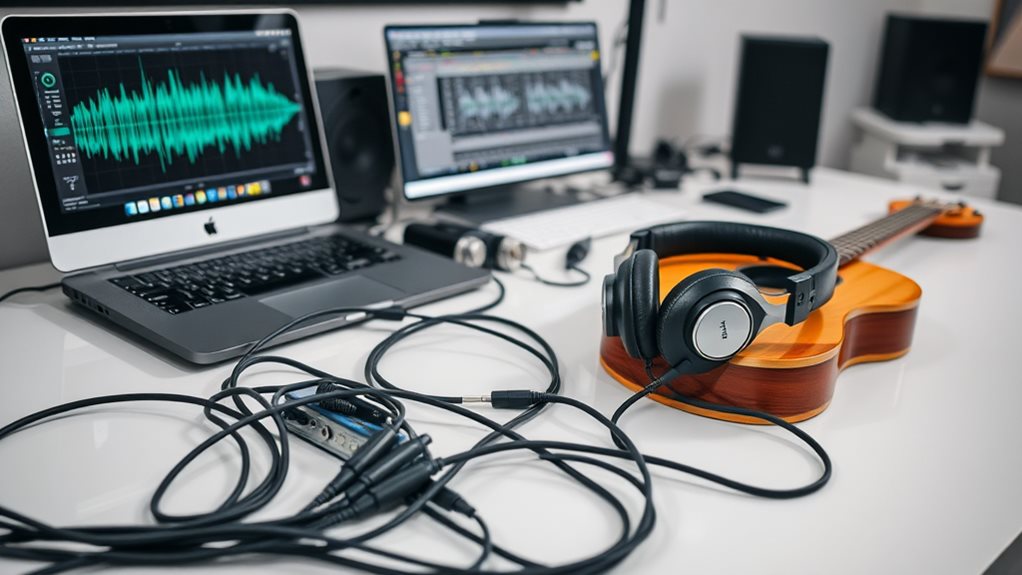
Digital technology has made music production more accessible by providing essential tools that were previously only available to professionals. With digital audio workstations (DAWs), affordable software, and readily available hardware, you can convert your bedroom into a functional recording studio. This reduces your dependency on expensive, professional studios.
Broadband internet access is crucial for online collaboration, cloud storage, and global distribution of your work. You can utilize cloud services like Google Drive or Dropbox for seamless file sharing and manage projects efficiently. Online platforms like SoundCloud, Spotify, and iTunes offer distribution channels that didn't exist a decade ago.
Software has revolutionized music production. You have access to sophisticated digital audio editing software, allowing precise refinement of your tracks. Virtual instruments and effects plugins**** significantly enhance sound quality without the major financial investment needed previously. For example, you can use software synthesizers like Serum or Massive to create high-quality sounds without buying expensive hardware.
Music notation software and music theory analysis tools can also help you develop your skills. Software like Finale or Sibelius allows you to compose music, while tools like Hooktheory or MusicTheory.net help you understand music theory.
Artificial intelligence (AI) is changing the game. Although still developing, AI integration in music production software hints at future possibilities. For instance, AI-powered plugins like Amper Music or AIVA can help you compose music or create beats.
Home recording has reshaped the music landscape. With readily accessible digital audio technology, musicians can now produce high-quality music from the comfort of their own homes. This has democratized music production, allowing more people to create and share their music with the world.
Accessibility and Learning
Technology has transformed music education by providing accessible and affordable resources. The widespread availability of software and online resources has significantly impacted music education and independent learning.
Digital Audio Workstations (DAWs) have become a standard tool in many classrooms, allowing students to produce and edit music with ease.
Online courses and tutorials offer structured music theory lessons****, making it possible for students to learn at their own pace.
Collaborative platforms facilitate peer learning and feedback****, enabling students to share their work and receive constructive criticism from others.
Independent learning thrives through readily available online tutorials****, allowing students to learn specific skills or techniques.
The shift towards online resources has made music education more accessible, particularly in underserved areas.
Students can now participate in music education regardless of geographical location, which has greatly improved access to music education for many.
However, accessibility challenges persist, including unequal access to reliable internet and necessary devices, creating a digital divide that affects music education.
The cost of software and hardware remains a barrier for some, limiting independent learning opportunities.
To address these inequalities, deliberate efforts are necessary to ensure equitable access to technology and digital literacy training.
Additionally, responsible technology integration in music education must include a strong focus on ethical considerations and digital citizenship**, such as addressing intellectual property rights and fair attribution on collaborative platforms**.
The Changing Music Industry
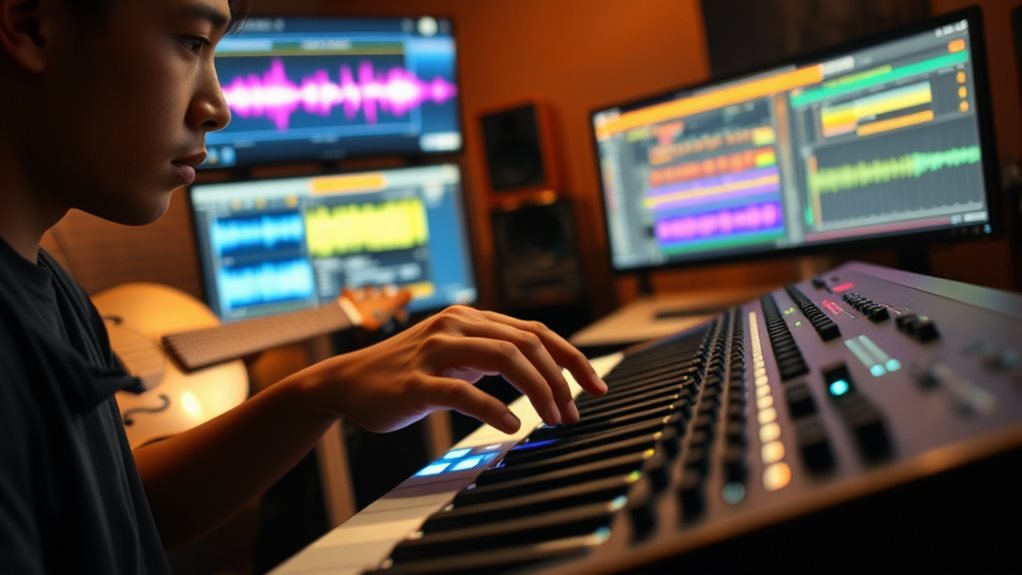
The Philippine music industry has undergone a significant transformation due to technological advancements.
The traditional recording industry has declined, and in its place, an independent music scene has emerged, particularly in Metro Manila. Digital tools have made music production and analysis more accessible, with broadband internet, home recording technology, and digital audio workstations (DAWs) simplifying the process.
Social media has become a key platform for promotion and distribution, while online platforms like SoundCloud and Spotify have increased the reach of music globally.
The way music is distributed has changed dramatically. Traditional channels are now supplemented by online platforms, giving artists more control and autonomy over their work.
Independent labels and crowdfunding initiatives have become successful alternatives, allowing artists to produce and distribute music independently. Live music venues, although affected by the pandemic, continue to provide essential spaces for independent artists, with online components becoming increasingly important.
While the industry has grown, challenges remain. The lack of established support systems means artists must develop entrepreneurial skills alongside their creative ones.
Despite these challenges, the industry is adapting, embracing the opportunities that technology provides for music collaboration and cultural fusion.
Economic Shifts and Models
The Philippine music industry has undergone a significant shift in its economic landscape.
With the rise of independent artists, traditional labels have declined, creating space for economic independence. Digital technologies have empowered artists, allowing them to bypass gatekeepers and build direct relationships with their audiences.
New funding strategies have emerged, including:
- Crowdfunding platforms, where artists raise funds from their audience for specific projects.
- Merchandise sales, which provide an additional revenue stream.
- Direct-to-fan sales, enabling artists to sell music directly to their audience.
- Sponsorships, where brands partner with artists to reach their target audience.
Digital marketing has become crucial for audience engagement.
Artists now use digital platforms to bypass traditional media, necessitating revenue diversification.
Streaming royalties are no longer enough, and artists must adapt to new revenue streams.
Artist collaborations have become strategic tools.
Collaborations enhance reach and appeal, but also require artists to manage their finances and marketing efforts. This includes balancing creative freedom with the demands of building a sustainable career.
Challenges persist, including piracy and the need for adaptability.
Effective digital marketing demands constant adaptation and learning. Building a strong online presence requires dedicated effort, and funding strategies must be adaptable to changing trends.
Artist control requires stronger self-reliance and financial acumen.
AI and the Future of Music
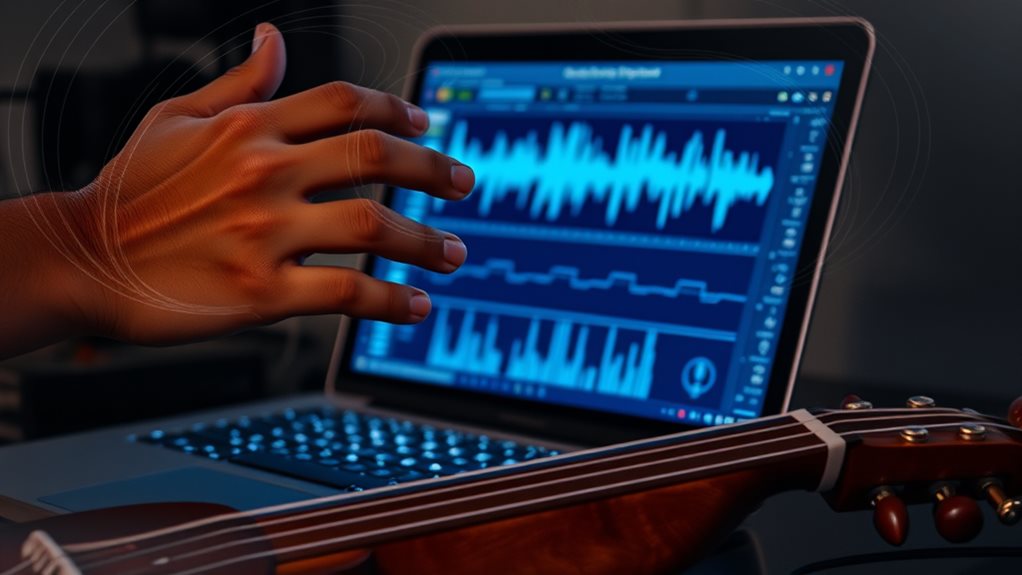
The future of music production in the Philippines is poised for a dramatic transformation with the rise of artificial intelligence.
AI is expanding rapidly and offers unprecedented opportunities for Filipino artists. AI can automate mundane tasks like file organization and basic mixing, allowing artists to focus on creative aspects of songwriting innovation. Additionally, AI-generated instruments provide instrument diversity, expanding sonic palettes beyond budgetary constraints.
AI-generated vocals, however, raise concerns about vocal authenticity and artistic integrity. It's crucial to consider the implications of relying on AI-generated vocals and ensure that they don't compromise the authenticity of the music.
Human-AI collaboration is becoming increasingly common. AI tools can analyze existing music to suggest new melodies or harmonies, helping artists overcome creative blocks.
Music personalization will also become more prevalent, with AI tailoring musical experiences according to individual preferences.
The key to successfully integrating AI into music production is to maintain artistic integrity. While AI can assist in generating unique soundscapes and melodies, it is crucial that artists learn to utilize AI tools to augment their own creative process, not replace it.
The balance between leveraging AI's power for production efficiency and safeguarding artistic integrity is crucial for the future of Filipino music. AI should enhance, not diminish, an artist's individual creative voice.
Ethical Considerations
Ethical Considerations in Digital Music Production in the Philippines
Piracy Threatens Artists' Livelihoods
The rise of digital music sharing has fueled piracy, causing significant financial losses and undermining the industry's sustainability.
Piracy results in artists losing income, making it difficult for them to sustain their careers. To combat this, the industry must take responsibility for protecting intellectual property.
Unequal Access to Technology Widens the Gap
The digital divide limits opportunities for many talented Filipino musicians.
Only those with access to technology can produce and promote their music digitally, leaving others behind. Initiatives promoting affordable technology and digital literacy are necessary to bridge this gap.
Inflated Online Metrics Distort Competition
Fake followers and manipulated engagement metrics create a skewed playing field, pressuring artists to engage in unethical practices.
Artists may feel compelled to buy followers or likes to compete, compromising their artistic integrity. Transparency is essential to ensure fair competition.
Balanced Music Education is Crucial
Integrating technology into music education requires a careful approach.
A balanced approach that combines traditional skills with technological proficiency is necessary to produce well-rounded musicians. This ensures that musicians are equipped with the skills they need to succeed in the digital age.
Policy and the Way Forward
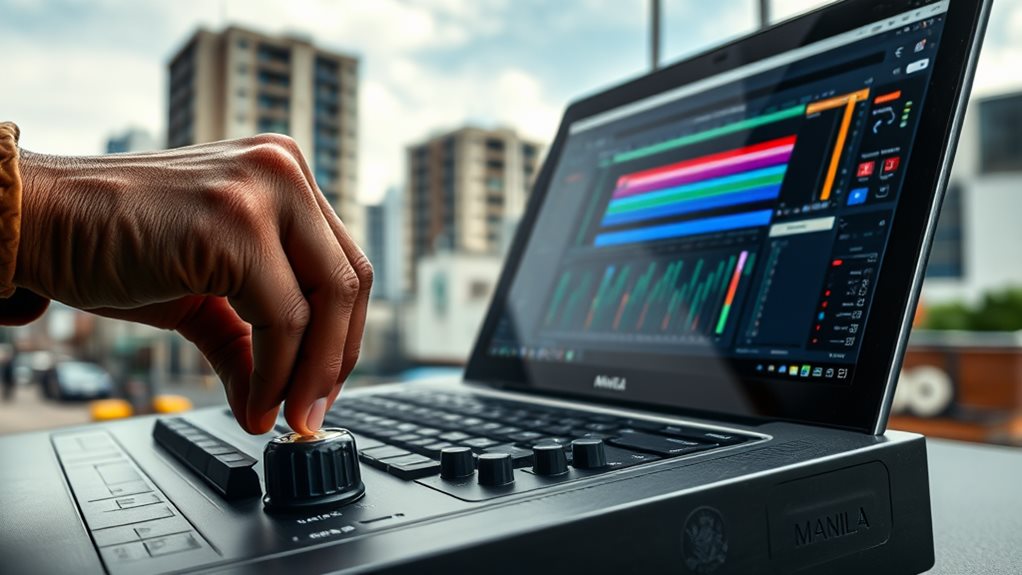
A robust policy framework is crucial for navigating the complex landscape of digital music production in the Philippines.
To ensure fair compensation for artists and protect intellectual property rights, clear regulations governing digital music distribution are necessary. Policy collaboration between the government and industry stakeholders is essential to establish licensing frameworks and address piracy. This collaboration can lead to proactive measures that support independent artists.
Government initiatives can provide funding, tax incentives, and access to resources. For instance, public-private partnerships can facilitate access to low-interest loans and workshops. Investment in infrastructure is also vital, including expanding broadband access, providing affordable recording facilities, and offering subsidized music education programs. These initiatives will foster digital literacy and empower artists.
Promoting Filipino music globally requires strategic marketing campaigns and collaboration with international events. This can be achieved by leveraging online platforms and forming partnerships with media outlets. Government campaigns and international collaborations are necessary to increase the visibility of Filipino music.
Strengthening intellectual property rights is paramount. A robust policy collaboration is necessary to foster a thriving ecosystem for Filipino music, enabling artists to thrive in the digital age.
| Policy Area | Actionable Steps |
|---|---|
| Regulation of Digital Music | Enact stronger anti-piracy laws; fair royalty schemes |
| Supporting Independent Artists | Grant programs; tax breaks; crowdfunding initiatives |
| Infrastructure Development | Invest in broadband; establish public recording studios |
| Marketing & Promotion | Government campaigns; international collaborations |
Questions and Answers
How Did Piracy Impact Filipino Artists?
Piracy significantly impacted the revenue of Filipino artists. By disrupting the traditional music distribution channels, piracy drastically reduced the income of artists, forcing them to adapt to the new reality or struggle to survive. Independent artists were particularly affected, as they lacked the financial resources and industry connections to absorb the losses.
What Are the Best DAWS for Filipino Musicians?
The best DAW for Filipino musicians depends on their specific needs and preferences. When choosing a DAW, consider factors such as genre, budget, and workflow. For instance, if you're a hip-hop artist, you may prefer a DAW with robust beat-making features, while a folk musician may prioritize acoustic instrument processing.
Collaboration features are essential for effective teamwork. Look for DAWs that allow real-time collaboration, file sharing, and simultaneous editing. This enables you to work with bandmates, producers, or engineers remotely, streamlining your creative process.
Your budget will also influence your DAW choice. Free or low-cost options like Audacity or Cakewalk Sonar Home Studio may suit beginners or those on a tight budget. Mid-range DAWs like FL Studio or Ableton Live offer more features, while professional-grade options like Pro Tools or Logic Pro provide advanced functionality.
Genre exploration is also a key consideration. If you're experimenting with different styles, choose a DAW that accommodates various genres, such as electronic, rock, or R&B. This flexibility will help you explore different sounds and techniques.
Lastly, consider DAWs that offer additional features beyond music production, such as audio engineering, music distribution, and artist promotion tools. These can help you develop your skills, share your music, and grow your fanbase.
Did Digital Tech Change Filipino Musical Styles?
Digital technology transformed Filipino musical styles by fusing genres and introducing global sounds.
This transformation broadened traditional forms, such as Kundiman and Harana, which originated in the Philippines. With digital tools, Filipino musicians could experiment with new sounds, creating fusion genres like Pinoy rock and electronic OPM (Original Pilipino Music).
The internet and social media also made it possible for Filipino artists to access and draw inspiration from global music trends. This exposure reshaped local aesthetics, as seen in the popularity of K-pop-inspired groups like SB19 and 4th Impact.
In the independent music scene, digital technology enabled artists to produce and distribute their work more easily. This democratization of music production led to a proliferation of new sounds and styles, such as indie folk and electronic music.
How Has Copyright Law Evolved in the Digital Age?
Copyright law has struggled to adapt to the digital age.
In the past, copyright law was designed to protect physical creative works such as books, music, and movies. However, with the rise of digital distribution, copyright law has had to evolve to address new challenges. One major challenge is enforcement, which has become tougher due to the ease of sharing and accessing copyrighted content online.
To combat this, copyright holders and governments have had to adapt to online platforms, such as social media and file-sharing sites, where copyrighted content is often shared without permission. Strengthened international cooperation has also become essential, as copyrighted content can be shared across borders with ease.
For example, the Digital Millennium Copyright Act (DMCA) in the United States has been amended to address online copyright infringement. Similarly, the European Union's Copyright Directive has been updated to ensure that online platforms take more responsibility for removing copyrighted content from their sites.
What's the Future of Live Filipino Music?
The future of live Filipino music will involve a shift towards hybrid models that prioritize audience engagement.
Audience participation will become a key element, with live performances incorporating digital elements to increase crowd interaction. For instance, concerts may use virtual reality or augmented reality to create immersive experiences. This might include virtual meet-and-greets, interactive music videos, or even allowing the audience to influence the setlist in real-time.
Digital innovations will also change the way venues operate and music is distributed. Online platforms will emerge as alternative venues, allowing artists to reach a broader audience and reducing the need for physical spaces. This could lead to new revenue streams, such as subscription-based services or pay-per-view concerts. As a result, artists will need to adapt their strategies to stay relevant, focusing on building a strong online presence and engaging with fans directly.